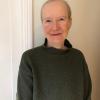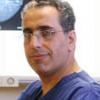Contents
-
What is breast cancer?

- How common is breast cancer?
- What are the risk factors associated with breast cancer?
- What are the different types of breast cancer?
- What are the stages of breast cancer?
- Where can breast cancer spread to?
- What is the prognosis (outcome) for women with advanced breast cancer?
- What are the current treatment options for women with advanced breast cancer?
- Key Facts
What is breast cancer?
The breasts are made up of fatty tissue, connective tissue and gland tissue divided into lobes. Breast cancer is a malignant tumour that develops from the cells that line the breast, the lobes (the milk-producing glands) and the ducts (the milk passages).
How common is breast cancer?
Breast cancer is the most common type of cancer among women in the UK, accounting for about 1 in 3 of all cancers in women. Approximately, 50,000 new cases of breast cancer are diagnosed every year in the UK. Breast cancer results in more than 12,300 deaths in the UK each year, accounting for 17% of female deaths from cancer. It is the most common cause of death in women aged 35-54 years.
What are the risk factors associated with breast cancer?
There are a number of risk factors known to be associated with the likelihood of developing breast cancer. These include: older age; a strong family history of the disease, especially in a mother or sister (genetic factors); early onset of menstrual periods (early menarche) and late menopause; not having children or having a first child over the age of 30 years; and obesity.
What are the different types of breast cancer?
There are several different types of breast cancer. Cancers that remain confined to the lobes and the ducts of the breast are called ‘non-invasive’ or ‘in situ’. An ‘invasive’ cancer is one where the cancer cells have moved outside the ducts and the lobes into the surrounding breast tissue. Advanced breast cancer is when the cancer has spread from the breast itself to the areas surrounding the breast (e.g. the chest) and/or to other organs in the body (e.g. lungs, liver). Breast cancers can also over-express (have too many of) certain receptors.
ErbB2-positive breast cancer (also known as HER2-positive breast cancer) is breast cancer in which the cancer cells over-express ErbB2 (HER2) receptors, a member of the ErbB family of receptors. When naturally-occurring growth factors in the body attach to the ErbB receptors, the cancer cells are stimulated to divide and grow. About 25% of women with breast cancer have ErbB2-positive tumours. ErbB2-positive breast cancer tends to be more aggressive than ErbB2-negative disease and patients have a poorer prognosis.
Hormone-sensitive breast cancer (also known as hormone-responsive breast cancer or hormone-receptor-positive breast cancer) is breast cancer in which oestrogen (ER) and/or progesterone receptors (PgR) are over-expressed in the tumour (i.e. a significant number of the cancer cells have receptors for these hormones). Approximately 65% of breast cancer patients are oestrogen-receptor-positive (ER+) and/or progesterone-receptor positive (PgR+), and this is more common in older, postmenopausal women. Of these, a significant proportion (about 20 to 25%) are also ErbB2-positive.2 Around 15% of all patients with metastatic breast cancer have hormone receptor and ErbB2-receptor co-positive (HR+ / ErbB2+) disease. Such patients have an aggressive form of breast cancer and often show reduced sensitivity to hormonal therapy.
What are the stages of breast cancer?
Breast cancer is classified in stages according to whether it has spread. Stage IV is advanced or metastatic cancer, where the cancer has spread (metastasised) to other parts of the body. Between 10-15% of new cases of breast cancer are at the advanced stage, and around 40-50% of patients diagnosed with early breast cancer will go onto to develop advanced disease. In total, about 12,000 cases of advanced breast cancer present each year.
Once the cancer has reached this stage, it is, in most cases, incurable: the goals of treatment are to extend the time it takes for the cancer to worsen (progress), and hence, to prolong the patient’s life, and to control the symptoms, with as few side effects as possible.
Where can breast cancer spread to?
Breast cancer can spread to other sites in the body including: the skin and soft tissues of the chest wall; the bones; the lungs; the liver; and the central nervous system (CNS), including the brain. The spread of cancer to the brain (brain metastases) is a common clinical problem in patients with breast cancer. Brain metastases can have unpleasant symptoms and are often difficult to manage.
Patients with ErbB2-positive breast cancer have a higher risk of developing brain metastases than women with other types of breast cancer. Around one third of women with ErbB2-positive advanced breast cancer have been reported to relapse with brain metastases, often as the first site of their cancer progressing.
What is the prognosis (outcome) for women with advanced breast cancer?
Key factors that affect the prognosis include: the stage/extent of the cancer at diagnosis; and whether certain receptors (e.g. the ErbB2 receptor) are over-expressed. Once advanced disease has been diagnosed, the average survival time with treatment is 18 to 24 months. This may be reduced by up to 50% in patients with ErbB2-positive breast cancer. The prognosis for patients with brain metastases is generally very poor: 1-year survival from diagnosis of a brain metastasis is estimated to be about 20%.
What are the current treatment options for women with advanced breast cancer?
Advanced breast cancer can be treated with systemic therapies which can destroy, or control the growth and spread of, the cancer cells. Systemic treatments consist of: chemotherapies; hormonal/endocrine therapies; and ‘targeted’ therapies. These can be used alone or in combination depending on various factors (e.g. the size and extent of the cancer, whether or not the patient has had the menopause, whether the cancer has certain receptors). Chemotherapy agents destroy cancer cells by disrupting their growth. They cannot differentiate between normal and cancerous cells and often cause side effects. Hormonal / endocrine therapies interfere with the production of or block the action of oestrogen and usually form the mainstay of treatment in patients with hormone-receptor positive (HR+) breast cancer.
‘Targeted’ therapies are designed to target specific receptors or processes involved in the formation of cancer. Unlike chemotherapy, targeted therapies aim to attack cancer cells without damaging normal tissue and so can help to limit side effects.
Trastuzumab (Herceptin®) was the only licensed ErbB2-targeted therapy available in the UK prior to the launch of lapatinib (Tyverb).
Lapatinib is now available for use in combination with the chemotherapy, Capecitabine (Xeloda®), in patients with ErbB2+ advanced breast cancer who have received certain chemotherapies (anthracyclines and taxanes), and Herceptin-based therapy for advanced disease.
It is estimated that approximately 2,000 patients in the UK each year have cancer that continues to grow (progress) following treatment with Herceptin for advanced breast cancer. Patients who have HR+ / ErbB2+ co-positive breast cancer might benefit from combined treatment with a hormonal therapy and ErbB2-targeted therapy.
Key Facts
- Breast cancer is the most common cancer in women in the UK. Around 12,000 cases of advanced breast cancer present every year.
- Breast cancer is the leading cause of death in women aged 35-54 years.
- Key factors that affect the prognosis include: the stage/extent of the cancer at diagnosis; and whether the cancer cells have too many of certain receptors (such as the ErbB2 [HER2) receptor or oestrogen (ER) receptor).
- Approximately 25% of women have breast cancer that tests positive for the ErbB2 (HER2) receptor, known as ErbB2 (HER2)-positive breast cancer.2,3 ErbB2-positive breast cancer is a more aggressive form of the disease.4-7
- Approximately 65% of women have breast cancer that tests positive for the oestrogen (ER) and/or progesterone (PgR) receptor, often known as hormone sensitive breast cancer. Up to 25% of these patients are also ErbB2-positive.2
- Advanced breast cancer is usually incurable; the goals of treatment are to relieve symptoms, extend survival and maintain quality of life for patients.
- Treatments for advanced breast cancer include hormonal/endocrine therapies, chemotherapies and targeted therapies.
The time of a woman’s life when her ovaries stop releasing an egg (ovum) on a monthly cycle, and her periods cease
Full medical glossary







